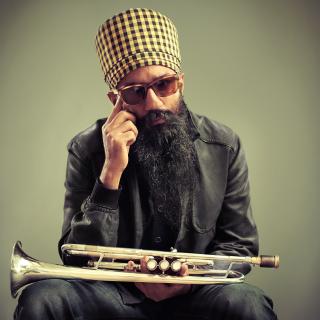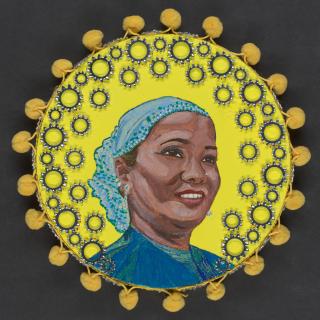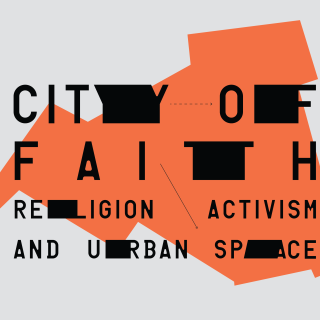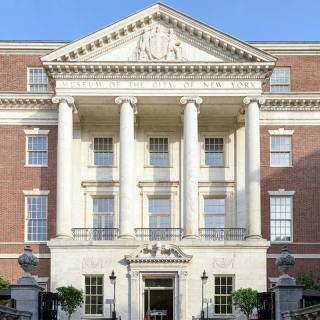City of Faith: Ambient Faith
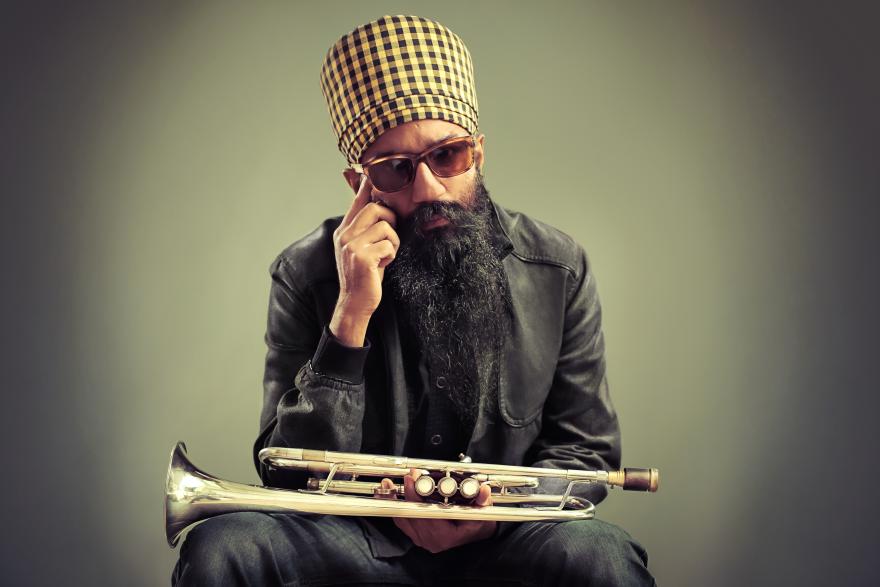
Ambient Faith
Relationships between religion and the physical city go beyond the permanent built environment. “Ambient Faith,” as anthropologist Matthew Engelke calls it, occurs when religious groups use subtle sounds, smells, tastes, or visual cues to take up space without appearing to impose religion on the public sphere. Those who are similarly religious perceive these visual cues, soundscapes, or scentscapes and feel an affinity towards them; for others, they blend into the background.
But ambience is more than simply atmospheric; it is also political. The ability to be safely inconspicuous is a privilege afforded to groups that are accepted as belonging in a given space. Others, including religiously profiled South Asian Americans or members of larger Sikh, Hindu, Muslim, and Arab American communities, stand out. Often, people outside these communities perceive religion in their actions even when it is not in fact present or central. When combined with white supremacism or Islamophobia, such an erroneous assumption can turn deadly for those who become hyper-visible.
In this gallery, we invite you to use your senses thoughtfully and imaginatively to uncover the complex political, labor, and other systems underlying these sensory phenomena, and to learn more about the communities that navigate these complicated realities. Artists and activists who draw inspiration from these blurred spaces and sensations do just that.
The photographs above show how religious groups within South Asian American and other communities use sidewalks, waterways, and parks to make space for worship. These uses range from direct signage on buildings to fleeting public prayer. The latter may not require erecting permanent structures, but they can still leave physical traces in the landscape. Such landscapes can sometimes become contested spaces due to the higher levels of scrutiny these communities face by the government and public.
FAR LEFT
Andil Gosine
Vishnu? [photo of murthi at Jamaica Bay]
2016
Reproduction
Courtesy of Andil Gosine
At Jamaica Bay, some Indo-Caribbean Hindu communities offer murthis (deities) to the waters, a practice that other New Yorkers often perceive as foreign. More recently, community-based activists from the organization Sadhana have worked with the National Parks Service to clean the Bay, salvaging and repairing murthis in the process. This un-staged photo is part of a larger series by the artist, who accompanied the activists on beach clean-ups. The photo documents a murthi before salvaging begins, and speaks to the tension of the space.
TOP
Ed Grazda
Main Street [from the series “Flushing Project”]
2002
Gelatin silver print
Museum of the City of New York. Gift of Joy of Giving Something, Inc., 2020.10.177
BOTTOM
Mel Rosenthal
[Men observe the call to prayer, Astroland Amusement Park, Coney Island]
1999 (printed 2001)
Gelatin silver print
Museum of the City of New York. Museum purchase, 2006.37.11
MIPSTERZ. Photographer: Diane Valera, Director: Abbas Rattani, Art Director: Sara Alfageeh, Creative Director: Sumer Zuberi, Executive Producers: Akifa and Sofia Khan
ALHAMDU | MUSLIM FUTURISM
2021
Reproduction
Courtesy of MIPSTERZ
MIPSTERZ. Art by Sara Alfageeh
Jam Time
2018
Reproduction
Courtesy of MIPSTERZ
Below, MIPSTERZ, an arts and culture collective for emerging Muslim creatives, imagines a future free from the oppressive realities of anti-Black racism, Islamophobia, Orientalism, homo-trans phobias, settler colonialism and everything in between. Inspired by and building upon Afrofuturism, they create conversations centered on five themes: imagination, identity, community, resistance, and liberation. In this future, a bold, diverse, and joyful aesthetic is intentionally public—and sometimes unintentionally political. It defies the pressures of state surveillance and public perception.
The portraits featured here were shot in, and reclaim, the public spaces of New York City. They are part of a larger series of over 200 images representing the MIPSTERZ collective’s professional, ethnic, and creative diversity.
Use the QR code to learn more about the individuals featured here as well as the larger collective.
LEFT
Rebecca Solnit and Joshua Jelly-Schapiro, cartography by Molly Roy, and design by Lia Tjandra
Archipelago: The Caribbean’s Far North [from Nonstop Metropolis: A New York City Atlas]
2016
Reproduction
Courtesy of Rebecca Solnit, Joshua Jelly-Schapiro, and University of California Press
This map explores, amongst other topics, the complex racial and religious connections between the Caribbean and New York City, where Afro- and Indo-Caribbean communities make up as much as one-fifth of the immigrant population. The city acts as catalyst, blending the religious practices of different Caribbean communities. The map’s emphasis on water as a cultural and geographic solvent may be interpreted as invoking the communities’ religious uses of the city’s waterways.
Among the first South Asians in the U.S., Sikhs arrived in the early 20th century on the West Coast, where newspapers routinely mislabeled them as “Hindu” or “Hindoo.” More recently, the Sikh dastar (turban), “the most powerful and obvious symbol of Sikh identity,” has been misinterpreted by many Americans as associated with Islam, which in turn is falsely equated with terrorism. In the Islamophobia that swept the country after 9/11, Sikhs were among the first to be targeted.
Celebrating instead the individuals within these communities, these portraits of New York City-based Sikhs are taken from a larger series highlighting contemporary Sikh communities in the U.S. and U.K.
Amit Amin and Naroop Jhooti
[Photographs from the series “Sikh Project”]
2016
Reproduction
Courtesy of Amit Amin and Naroop Jhooti
CLOCKWISE FROM TOP RIGHT
Sat Hari Singh Khalsa
FORMER NYC SUBWAY OPERATOR
Sat Hari Singh, aka Kevin Harrington, was driving a train into Fulton Street Station when the first World Trade Center tower was hit. He quickly reversed back to Wall Street, helping to save 800 lives. Although the MTA honored him with an award, Sikh and Muslim employees soon were forced to brand their religious headgear with an MTA logo or face transfer to non-public positions. With the help of the NYC-based Sikh Coalition, Sat Hari and other plaintiffs successfully sued the MTA.
Sonny Singh
MUSICIAN AND EDUCATOR
Simultaneously spiritual and rebellious, Sonny Singh’s music sends a message that hope, love, and devotion are crucial to our collective survival. He is an original member of the acclaimed Bhangra brass band Red Baraat, and recently released a solo album Chardi Kala. Now based in Brooklyn, Sonny leads workshops on race, religion, and social justice around the U.S. Here he wears a personalized checkered fabric and dumalla-inspired wrapping style.
Waris Singh Ahluwalia
ACTOR AND DESIGNER
Waris has worked with some of Hollywood’s most notable filmmakers, including Wes Anderson and Spike Lee. He has modeled for famous brands and runs an award-winning design studio, HOUSE OF WARIS. But one of the most recognized Sikh American figures of our time is not immune to racial profiling. In 2016 Waris was prohibited from boarding a flight in Mexico City because of his turban. He took a stand, forcing the airline to publicly apologize and commit to training its staff on all religious headgear.
Kulwinder Singh
PUNJABI DELI OWNER
At the age of 15, Kulwinder left Punjab, India, to work on cargo ships. In 1970, he landed in Brooklyn and stayed, finding work as a cook and eventually a cab driver. In 1993, he opened the now-renowned Punjabi Deli in Manhattan. The Deli serves a wide cross-section of New York City, especially cab drivers. Having firsthand experience of their grueling shifts, Kulwinder has positioned his deli as a place for cab drivers to re-energize with affordable food and chai.
Amrita Kaur Khurana
REAL ESTATE BUSINESS OWNER
Fewer Sikh women wear turbans than do Sikh men, but Amrita started to do so in 2008. Turbans raise the threat level for the wearer, but Amrita feels they are an integral part of her identity. She was the only female turbaned Sikh to formerly work at The New York Times, and says that now “as an entrepreneur, the turban has become my identity even more.” She also uses her turban to stand in solidarity with her sons, who started wearing these at six months old: “while I know it may be tough on them, I pray we become more...accepting as a society.”
ARTIST STATEMENT
This multimedia piece explores intersecting legacies that connect Dr. Martin Luther King Jr. to South Asian politics and immigration. Embedded in the architectural reference of a South Asian jaali (latticed screen), it suggests how the architectural markers of marginalized forms of religion and spirituality appear in immigrant neighborhoods in New York. The installation traces the origins of this “disruption” to the Civil Rights Movement and the 1965 Immigration and Naturalization Act, which removed racial bias in U.S. immigration policy. But the voyages were two-way. Dr. King’s engagement with decolonial politics in the 1950s and ’60s brought him to India, where he described himself as a “pilgrim.”
Utsa Hazarika
Pilgrims/This is Not That Dawn
2022
Run time: 8:44 minutes
Multimedia
Courtesy of Utsa Hazarika
RIGHT
Azra Akšamija
Survival Mosque
2005
Photomontage
Courtesy of Azra Akšamija
ARTIST STATEMENT
Survival Mosque critiques the surveillance and targeting of Muslim communities in the aftermath of 9/11. This wearable mosque is kitted out with elements for self-protection such as the American flag façade that communicates patriotism (a more acceptable form of religion), gasmasks, nose filters, a first aid kit, and a security camera (for safety and as a critique of the surveillance state). The mosque is self-sufficient: prayer rugs unfold from it, and the mosque is equipped with liturgical and practical features such as washing solutions for ablution and for cleaning if one is spit on, ear plugs against insults, a copy of the American Constitution with its amendment guaranteeing religious liberty, and educational books on Islam.
TOP
Tanaïs
A Love Supreme
2022
Rope incense and twine
Courtesy of Tanaïs
ARTIST STATEMENT
Drawing on the speculation that the title of John Coltrane’s legendary album A Love Supreme is a nod to the phrase “Allah Supreme.” This installation is a remembrance: it connects lineages from the first Muslims on this land, who were enslaved Africans, to communities of Black Muslim Americans and the newer waves of immigrants from 1965, the year A Love Supreme was released.
The piece is composed of hand-braided Nepali lokta paper filled with powdered incense and dipped in fragrant oils. The scent is a mélange of notes from Muslim diasporas from Africa, the Middle East, and South Asia (musk, frankincense, sandalwood, and rose). The paper’s hues of black, with revolutionary pops of red, green and white, are threaded on twine in the style of a musical staff. Each incense signifies the notes of Coltrane’s work, mirroring the repetition of the phrase, “A Love Supreme.” Through this incantation, an interpretation in praise of the Divine: Alhamdullilah.
Saks Afridi
Somewhere in America
2015
Reproduction
Courtesy of Saks Afridi
ARTIST STATEMENT
Although it resembles an illuminated Quran, this piece is actually an English-to-Arabic transliteration of Jay-Z’s “Somewhere in America.” Both Quranic scripture and hip-hop are rooted in rhythm and rote memorization. Both are quoted extensively but often misunderstood. The meticulously designed golden border paintings of Islamic art have visual parallels to the extravagance and imagery of hip-hop. Both are a product of historical, political, and economic circumstances and have served as a voice for those subjugated by political and economic oppression.
—
The print also speaks of hypervisibility, otherness, and of course misidentification. Did you assume this was a page from the Quran?
TOP
Johannes Eisele
[A Muslim man prays next to a halal food stand in midtown Manhattan]
2019
Reproduction
AFP via Getty Images
The aroma of halal food, and the sight of sidewalk halal food vendors, is a quintessential New York City experience. Like many other cuisines, halal food has religious origins, aligning food preparation with Islamic teachings. Halal carts first appeared in New York in the late 1980s to provide quick and cheap food to Muslim New Yorkers, professionals, and service workers. Over the years, halal food has become a gastronomic delight for all New Yorkers.
BOTTOM
The Center for Urban Pedagogy, Street Vendor Project, and Candy Chang
Vendor Power
2009
Reproduction
© the Center for Urban Pedagogy
According to the Street Vendor Project, nearly 20,000 vendors—mostly immigrants and people of color—work on the streets of New York City. Halal food vendors are part of this network. Street vending provides a crucial entry-point into the city’s economy, but it is also precarious work. Vendors have historically faced police crackdowns, surveillance, fines, and a scarcity of licenses. This poster is part of a larger pamphlet that uses graphics and minimal text to decode the city’s regulations, to help street vendors understand their rights and avoid fines. It also educates the public about these issues.
These photographs go beyond the aroma of halal and other food carts and focus instead on the daily lives and stories of street cart vendors. Two images from photographer Nancy Chuang’s ongoing project “Invisible Hands That Feed New York” document the stories of vendors Habib Nazarwal and Minakshi. A photograph by Mel Rosenthal shows an unnamed halal food vendor tending to his customer.
TOP LEFT
Nancy Chuang
Habib, Midtown West [from the series “Invisible Hands That Feed New York”]
March 2016
Reproduction
Courtesy of Nancy Chuang
In the words of the photographer, “Habib Nazarwal, originally from Afghanistan, advocates for natural foods and homeopathic medicine with gentle...humor. When a customer requests a chocolate muffin he jokes, ‘Do you have a note from your doctor?’”
Nazarwal started vending in the mid-1990s, when cart permits were more available. When this photograph was taken, limits on city-issued permits had driven the black market cost up to $25,000. In 2021, the City passed legislation to increase the number of licenses, but as of July 2022 the change had yet to go into effect.
BOTTOM LEFT
Nancy Chuang
Minakshi, Midtown East [from the series “Invisible Hands That Feed New York”]
March 2016
Reproduction
Courtesy of Nancy Chuang
The photographer explains, “After Minakshi’s food-obsessed brother unexpectedly died, she helped their father Yuvaraaj honor him by starting an award-winning Indian cart. Minni previously worked at the post office, but her passion for food made the career switch feel natural.”
TOP
Mel Rosenthal
Halal Food Stand
c. 2001
Reproduction
Museum of the City of New York. Museum purchase, 2006.37.21
